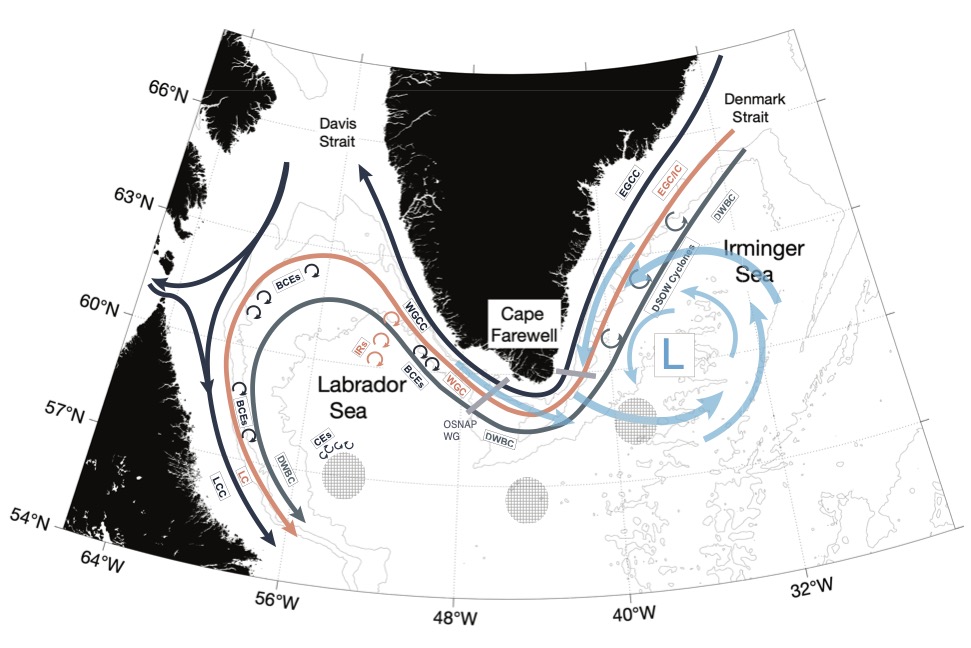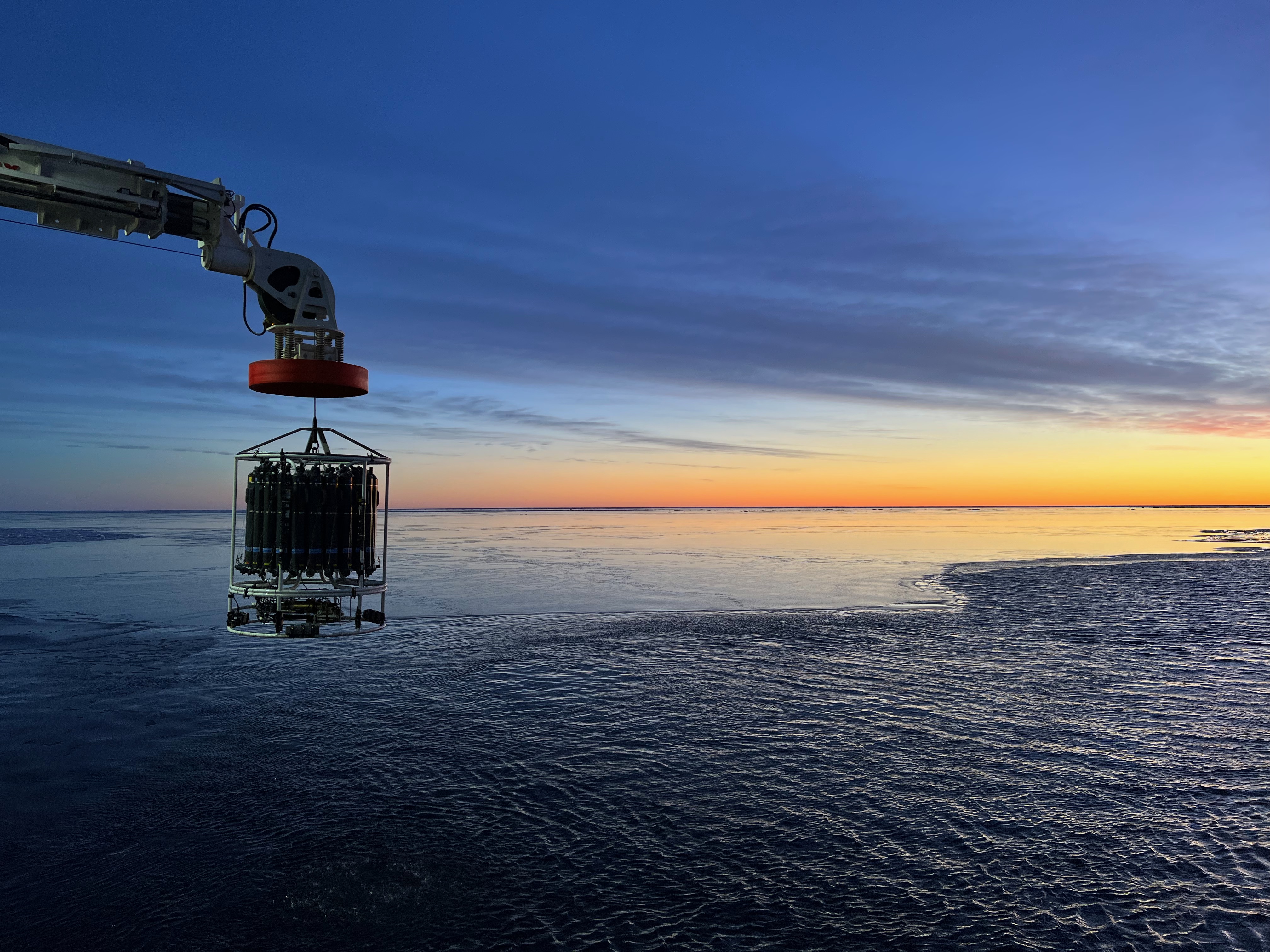My research focuses on the circulation and dynamics of the Arctic and subarctic oceans. Understanding the relevant physical processes presently is critical to understanding how our high latitude oceans will change in the future, and how these changes will impact global climate. For this research, I use a combination of direct in-situ measurements from research cruises, mooring arrays, drifters and profiling floats, with remote-sensing measurements from satellites, atmospheric reanalysis products, and process models.

Subpolar gyre circulation schematic from Pacini & Pickart, 2022
Subpolar gyre
I study the structure, variability, and dynamics of the boundary currents of the subpolar gyre. This cyclonic circulation transport heat and freshwater around the basin, and these properties influence boundary current transport and offshore property fluxes. If, how, and when these waters are fluxed offshore, they can influence ventilation and the formation of the lower limb of the Atlantic Meridional Overturning Circulation (AMOC). I seek to characterize the boundary current system across a range of spatio-temporal scales by coupling newly-available observations along with remote-sensing data and reanalysis output.

Chukchi Sea circulation schamtic from Pacini et al., 2019
Pacific Arctic
I study water mass transformaiton in the Pacific Arctic, and how atmosphere-ocean and ice-ocean interactions influence these dynamics. This has implications for biological productivity in the region, as well as the ventilation of the Arctic halocline. This has included characterizing the role of ice formation and brine rejection and convection, the role of wind on mixed layer development and aerosolization of surface waters, and the role of a loitering ice edge on near-surface stratification.

Photo of a CTD cast in the marginal ice zone in Beaufort Sea, Nov. 2022
Marginal Ice Zone
As Arctic sea ice becomes increasingly seasonal, the physical processes that influence ocean dynamics and properties like temperature, salinity, and stratification are changing. We use observations and models to understand ocean behavior near the ice edge across space and time scales.